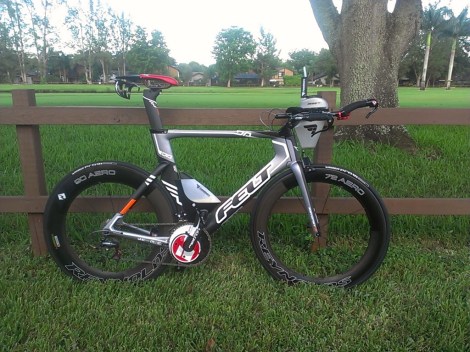The trend these days in wheels can be summed up thusly: wider and rounder is better. From Zipp’s FireCrest to Flo Cycling’s offerings and everywhere in between, the wide, toroidal rim shape is not just here to stay, but the name of the game. So when Reynolds Cycling, with the venerable Paul Lew’s name on the whitepaper, releases a new set of wheels and the interior edge to the rim is sharp enough to almost shave with, we start wondering what he knows and we don’t. Turns out, that list is longer than we have time for; but we’ll sum it up in a single phrase: how to make a screamingly fast set of wheels.
The Aero72 and 90 rims start out identical at the top – a fat 26.2mm width, and taper down to a very familiar V-notch profile, but with a significant point to the trailing edge that marks these wheels as a departure from the form that Lew made famous all those years ago. Reynolds is claiming that, at certain yaw angles, a rider may actually see forward thrust out of the Aero series of wheels. That’s a bold claim, and the whitepaper goes through pains to divorce the idea of “negative drag” from “forward thrust,” making a distinction that may require the reader to break out their physics textbook, but the math checks out. At certain yaw angles, in the tunnel, the Aero 90 can actually behave as a sail and buy a rider precious time on the bike course. Furthermore, the noted “sweet spot” for these wheels is 17 degrees of yaw – a massive sweep from just off a direct headwind all the way to a decided crosswind. If you race anywhere with serious sustained or gusty conditions, these are definitely worth a look.
For our review sample, we obtained a set consisting of a 72 front and a 90 rear with the new CTg brake pads, and a set of gorgeous minimalist skewers that we could have written a review of all on their lonesome. Let’s get this out of the way; these are incredibly distinctive wheels, from the graphics with their understated swoops to the knife-thin trailing edge of the rim, these get a lot of looks in transition and on the course, even a thumbs-up here and there. Sometimes, different is good.
Other times, different is really, really good, such as the case with the CTg pads and Reynolds’ braking surface. While not exactly the best performance in the wet we’ve ever seen, it was far from confidence-sapping, and in the dry the stopping power of this wheel and pad combination is incredibly good. It modulates well, doesn’t seem to suffer the same squishiness that other carbon pad and rim combinations are plagued with, and sustained braking gave no indication of fade. The in-house development of carbon blending and pad composition has really paid off for Reynolds; they have what is arguably the best non-aluminum stopping performance around.
As for putting down the power to the road, we have no complaints whatsoever. The 72 front rolls like the hubs are made of glass and the rear will spin forever if you let it. The pawls are relatively (or mercifully, if you like a silent bike) quiet when freewheeling and engage snappily with a minimum of travel after stomping a pedal. When subjected to sprint finishes, nary a sign of flex could be found in these wheels; solid through and through.
Where Reynolds’ newest really shine, however, is with the wind. The 72/90 is, simply put, quick. Reynolds claims this is due to their new shape leaving the wind attached to the rim longer by smoothing airflow over it, and by doing so significantly reduces drag. Their whitepaper proves it and we believe it; the wheelset handled any sort of wind we could come up with to ride through with aplomb. Crosswind unpredictability was a thing of the past with these wheels, even gusts were only felt as minor nudges in the bars, something that cannot be said for their competitors. It is also easy to believe their data when it says that the overall drag at yaw is less – we can attest to feeling genuinely slippery in our aero tuck and noticing an improvement in our split times. In short, the engineers at Reynolds appear to have pulled magic from the V-notch yet again.
If we had to find an initial downside with the Aero 72/90, it would likely be price. At $2,830 MSRP, these certainly are not cheap wheels, but their competitors clock in right around the $3,000 mark, so perhaps we are being forced to find fault where none exists with this nitpick. Certainly, we could make an argument that the money saved would go a long way in a couple sets of tires and tubes, but it does not change the fact that we are talking about a significant investiture, here.
In all, our short time has left us relatively impressed, but we have many a long mile to go with these wheels, and can’t wait for each and every one. We look forward to putting miles on what is, in essence, the next evolution of an iconic shape in cycling and seeing what else it has in store for us. As of right now, rumors of its demise have been greatly exaggerated.







Pingback: 8/11/2013 – AeroGeeks WiR | AeroGeeks·
Pingback: 8/18/2013 WiR | AeroGeeks·
Pingback: 8-25-2013 WiR | AeroGeeks·
Pingback: 9-1-2013 WiR | AeroGeeks·
Pingback: 9-8-2013 WiR | AeroGeeks·
Pingback: 9-15-2014 WiR | AeroGeeks·
Pingback: 10-6-2013 WiR | AeroGeeks·
Pingback: 10-13-2013 WiR – World Championship Edition | AeroGeeks·
Pingback: WheelBuilder Reynolds AERO PowerTap Package – First Ride | AeroGeeks·
Pingback: 10-20-2013 WiR | AeroGeeks·
Pingback: 11-17-2013 WiR | AeroGeeks·
Pingback: 11-24-2013 WiR | AeroGeeks·
Pingback: 12-1-2014 WiR | AeroGeeks·
Pingback: WheelBuilder Reynolds AERO PowerTap Package – Final Thoughts | AeroGeeks·
Pingback: 12-8-2013 WiR | AeroGeeks·
Pingback: Reynolds Aero 72/90 – Final Thoughts | AeroGeeks·